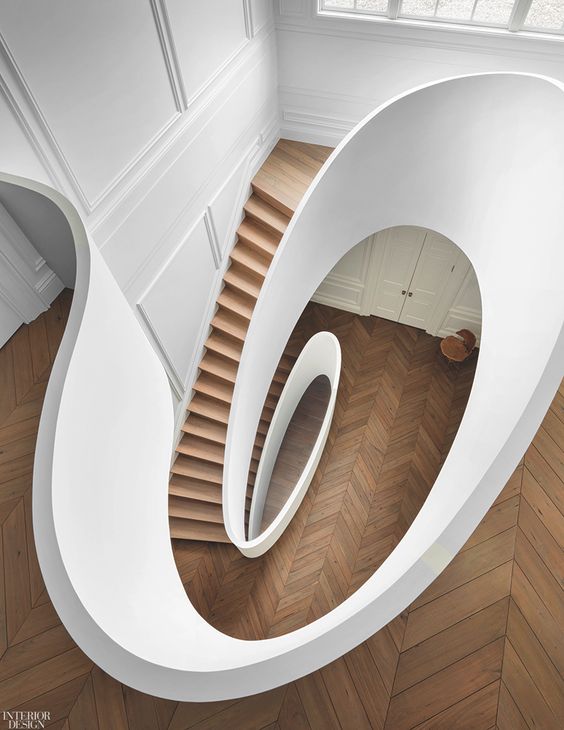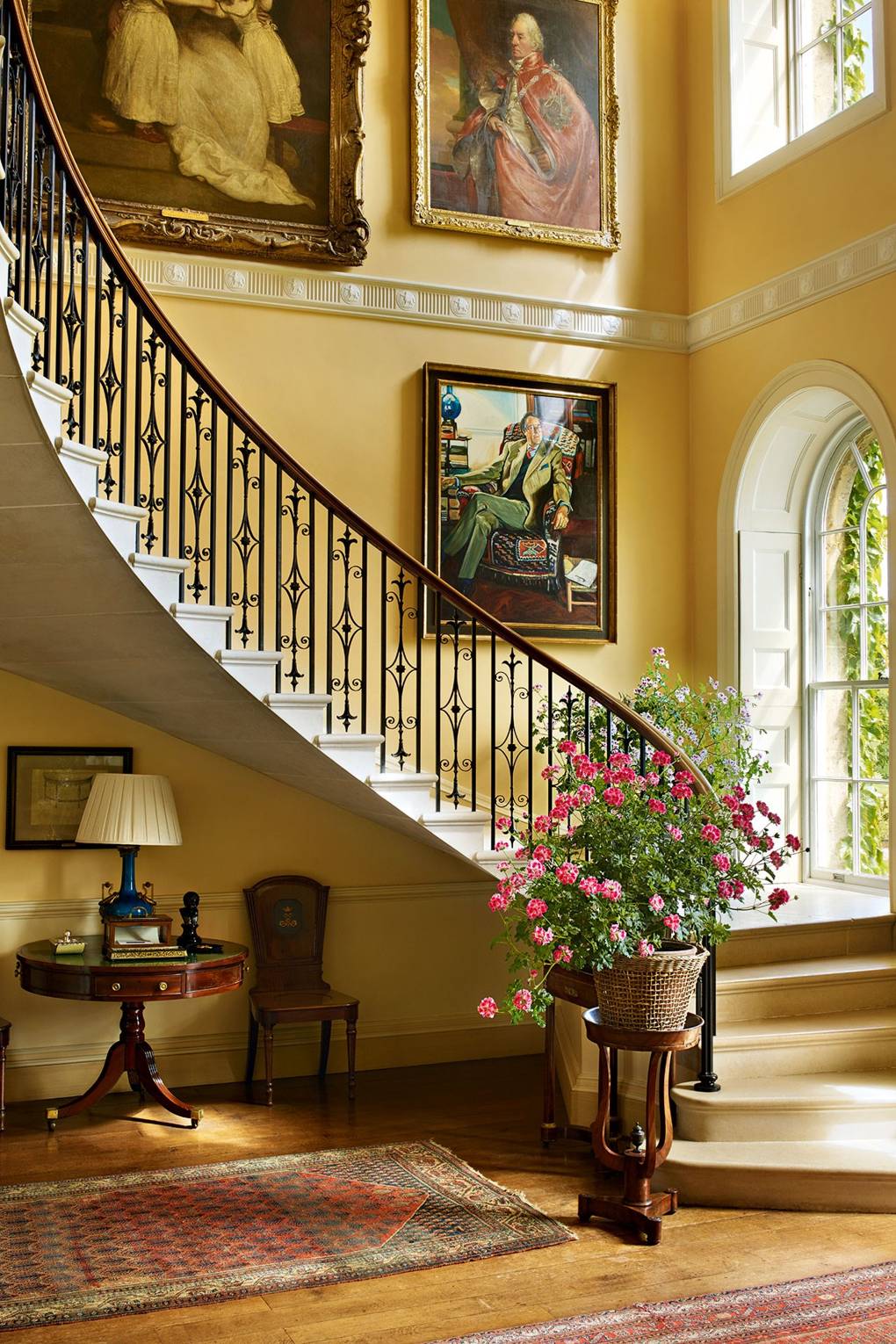A staircase can be more than a mere means of moving across floors; seen from a poetic perspective, it is a bridge between the earth and sky- bringing humans a fraction closer to the stars one step at a time. While their creation was originally driven by pure functionality our creative nature did not take long to turn them into works of art that we see today embellishing palaces, noble villas, temples and modern homes. Such an imposing component should not be overlooked, especially when it has the potential to define a space with its grandiosity.
6000 years ago the first stairs were devised out of tree trunks carefully arranged to help travelers in their journey across valleys and mountains. Today we can find them anywhere and everywhere but when it comes to incorporating them into our own homes not all stairways can be easily integrated into the existing composition. There are different designs and materials to consider based on our home’s layout- the present times no longer demand raw practicality but also beauty and a contemporary artistic expression.

The Vizcaya Museum staircase from Biscayne Bay can serve as an example of a design’s power to transport us to an unknown past with only a single look. Its sweeping form that spirals down a 20th century Villa seems to align perfectly to the Fibonacci sequence which reflects the aesthetic perfection of the golden ratio. In itself, this factor represents the admiration that its creators had for one of the greatest epochs of artistic expression: the Renaissance. Nonetheless, a rising movement these days presents a contrasting view claiming that the next outstanding creation will not surge from the remains of the past and instead it will be triggered by modernity.

Filmmaker Michael Bay’s Miami home embodies this principle with its 40-foot, inner steel and glass staircase. The nearly heavenly structure designed by architect Chad Oppenheim generates a rapturous final impact with a decorative ceiling to floor light sculpture. This use of artificial lighting is not uncommon, especially with certain staircases situated far away from windows or any bright areas. For practicality purposes the most favorable option has commonly been the use of a two-way switch controlled lighting at the top and landing of the stairs. Naturally, this leaves plenty of room to experiment with the element’s different forms such as string LED lighting, fan and roof lights or even a light-pipe which often graces small terraced homes, giving them a comfortable an intimate feeling.

Types
Limited spaces are known to demand more ingenuity; therefore, one way to escape the conventional, linear model is through the incorporation of a spiral staircase. The carved out stairs of the Fendi Residence located in Miami lays out the model of a stately product with wooden railings that fits perfectly into the home’s receiving room just like the final piece of a puzzle. Another design that goes hand in hand with small houses is the L-shaped staircase which enables the incorporation of extra features, both decorative and functional, such as an integrated storage, a staircase pod or even some roman-like balustrades that characterize classic architecture.

On the other hand, large spaces naturally lend themselves as a stage for the production of dramatic design and an ambience of greater flair. In this case a half turn staircase, also known as U-shaped, will easily stand out and favor the overall composition. This leads us to another approach consisting on the revival of the classical wisdom of architects who understood how the different segments of a building could complement each other to form a beautiful and proportionate whole. Open staircases exemplify this principle of unity seeing as they merge with their surroundings while generating at the same time a spacious feel. There is no single model for this type of staircase with designs ranging from elaborate to something more minimalistic and subdued. Some of the options include a straight flight of stairs, a quarter turn, half turn or even an s-shaped model.

Materials
A person’s eyes can distinguish the difference between a dark brown mahogany railing and a sleek metal handrail, however, one is not always aware of the effect that certain materials have over our perception of a space. Each material, carefully selected, can transmit a form’s essence and create the ambience of a room. Both traditional and contemporary models employ glass, wood, and metals interchangeably- no element is inherent to one trend although if used smartly it can serve to establish a specific style. Stone or concrete is, for example, common in historical country houses such as the 18th century Bowood Estate in England featuring a white cantilevered staircase that contrasts nicely with the warm yellow walls. At the same time this material is also typically used in contemporary houses alluding to an industrial and minimalist aesthetic. The floating stairs at Flat#1 by Ecole illustrate this point gracefully through their delicate and simple composition that seems to be almost suspended in the air.


Just as style often drives people’s decisions, practicality is also another motivator in the selection of materials and two of the most common for this instance are glass and steel. The first one serves not only to communicate a chic glamour but also to aid the flow of light across the staircase. For instance, the Shanghai Apple store introduced both elements- light and aesthetics- in the stylish design of translucent stairs twisting around a glass cylinder. On the other hand, metal also comes across as a popular option due to its lightness and versatility, thus, making the design more resistant and easier to install. The blackened steel staircase of the Cedar Dwelling in Portland exhibits all of the positive attributes that metal is naturally endowed with and it also exemplifies avant-garde architecture with its decorative steel rods that form a cocoon around the clear-cut staircase.


There is a reason why Led Zeppelin connected a stairway to heaven instead of choosing to reference another means of transportation. Since ancient times stairs have been endowed with a deep symbolic meaning- Egyptian and Mayan civilizations reserved the use of monumental staircases for their temples, driven by the idea that these were a link to a particular God and therefore represented wealth and prosperity. Similarly, today we can view them as a passageway between floors and as elegant representations of the spaces that surround them. If you had to take stairway to heaven, which one would choose?

